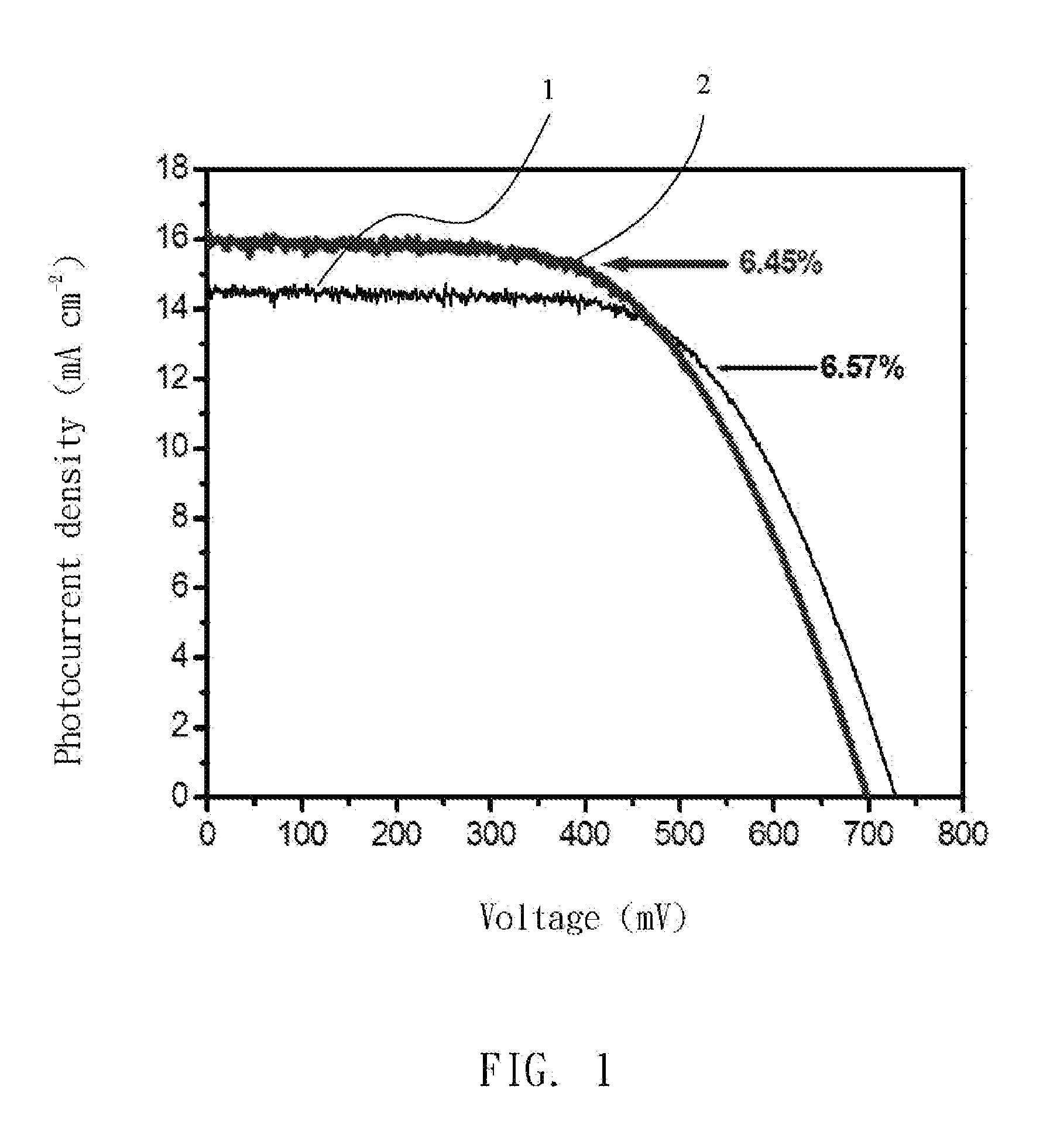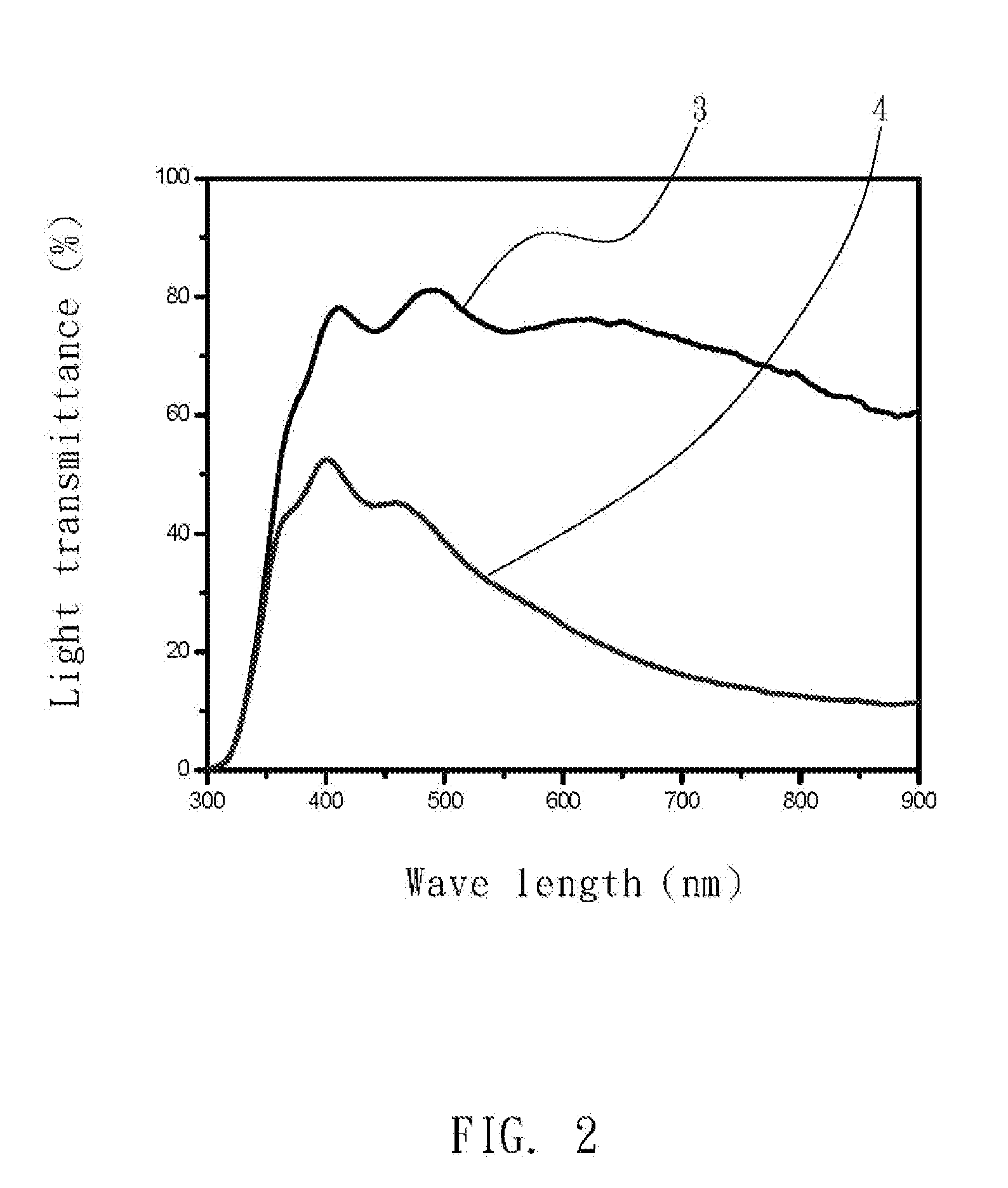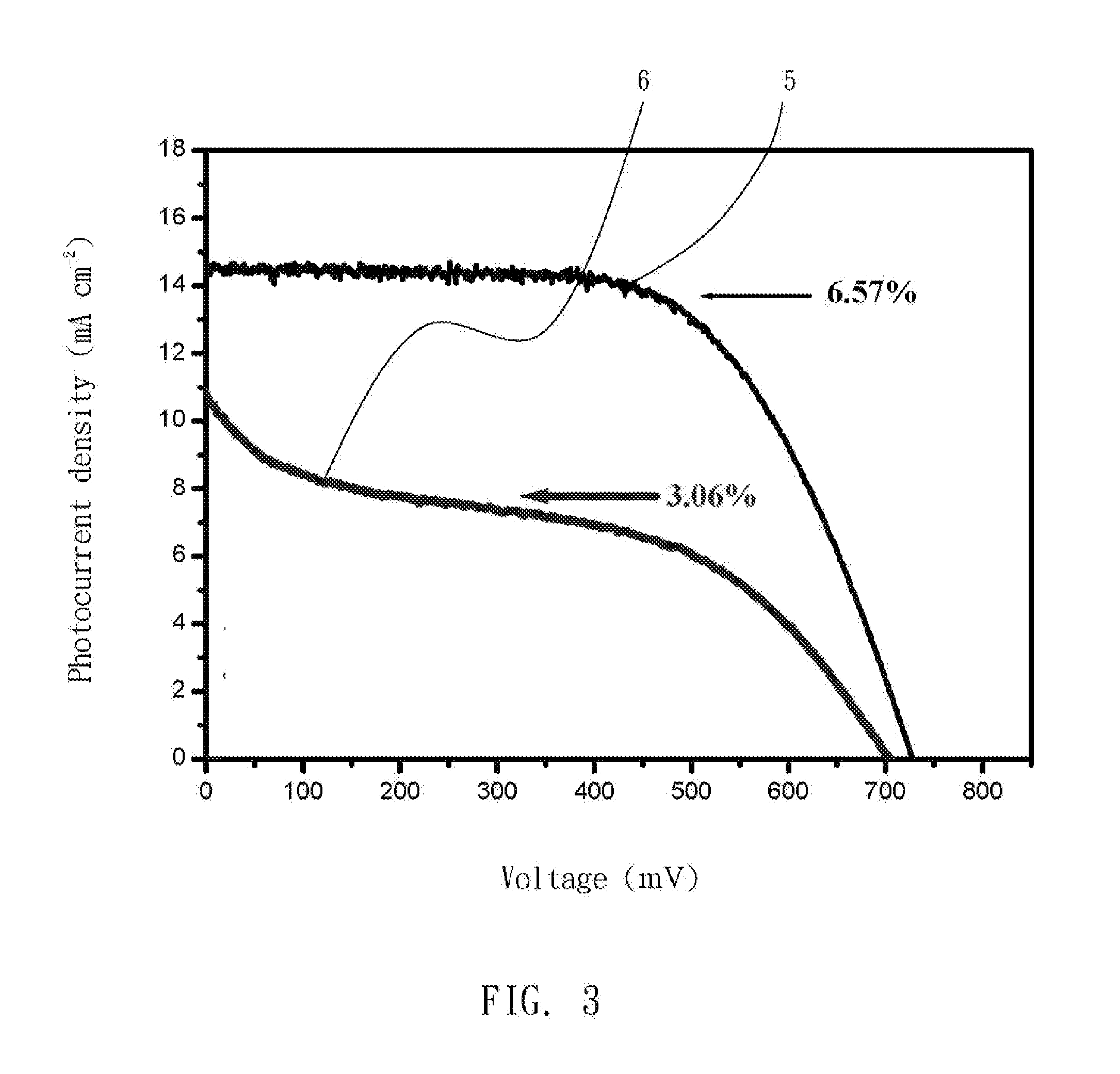Gelator for producing a gel electrolyte
a gel electrolyte and gel electrolyte technology, which is applied in the field of gelators, can solve the problems of reducing the effectiveness of batteries, difficult encapsulation processes of batteries, and approaching energy crises, and achieves the effect of not easy to evaporate and acceptable ionic conductivity
- Summary
- Abstract
- Description
- Claims
- Application Information
AI Technical Summary
Benefits of technology
Problems solved by technology
Method used
Image
Examples
example 1
[0025]A gelator for producing a gel electrolyte in dye-sensitized solar cells was poly-(acrylonitrile-co-vinyl acetate) (poly(AN-co-VA)) copolymer with molecular weight 250 KDa and comprises 92 wt % AN and 8 wt % VA. The gelator was adjusted to 7 wt % with a liquid-electrolytic solvent 3-MPN that contained iodide ions as redox couples at 25° C. to form a mixture. The mixture was stirred and heated at 130 to 140° C. for 5 to 10 minutes as required to dissolve its components into each other, and cooled to room temperature to form a gel electrolyte.
[0026]Multiple AN monomeric units link each other to polyacrylonitrile (PAN). PAN has strongly negative atoms (e.g. carbon and nitrogen) so that PAN can be coordinated to lithium ions in the liquid-electrolytic solvent, form ion-polymer complexes and dissolve in the liquid-electrolytic solvent.
[0027]Multiple VA monomeric units link each other to form polyvinyl acetate (PVA). PVA has a lower glass transition temperature (Tg) than PAN so that ...
example 2
[0030]A gelator for producing a gel electrolyte in electrochromic devices was (poly(AN-co-VA)) of molecular weight 250 KDa and comprises 88 wt % of AN and 12 wt % of VA. The gelator was adjusted to 10 wt % with a lithium perchlorate electrolytic solvent (LiClO4) at 25° C. to from a mixture. The mixture was stirred and heated at 80 to 100° C. for 5 to 10 minutes as required to dissolve its components into each other and cooled to room temperature to form a gel electrolyte.
[0031]With reference to FIG. 2, the gel electrolyte has different color in electrochromic devices. Light transmittance of electrochromic devices in bleach state (3) and in colored state (4) are shown in FIG. 2.
example 3
[0032]A gelator for producing a gel electrolyte in dye-sensitized solar cells was poly-(acrylonitrile-co-allyl acetate) (poly(AN-co-AA)) copolymer with molecular weight of 250 KDa and comprises 70 wt % of AN and 30 wt % of allyl acetate (AA). The gelator was adjusted to 20 wt % with a 3-MPN electrolytic solvent that contained iodide ions as redox couples at 25° C. to form a mixture. The mixture was stirred and heated at 130 to 140° for 5 to 10 minutes as required to dissolve its components into each other, and cooled to room temperature to form a gel electrolyte.
[0033]With reference to FIG. 3, efficiency of light to electricity conversion of the cell with the gel electrolyte is about 50% that with a liquid electrolyte containing 3-MPN as solvent. Photocurrent density-voltage curves of the liquid electrolyte (5) and the gel electrolyte (6) are shown in FIG. 3.
TABLE 2Light to electricityconversion efficiency (%)Isc (mA cm−2)F.F.Voc (mV)Gel3.0610.60.41706.1electrolyte
[0034]Light-electr...
PUM
| Property | Measurement | Unit |
|---|---|---|
| Length | aaaaa | aaaaa |
| Current | aaaaa | aaaaa |
| Electric potential / voltage | aaaaa | aaaaa |
Abstract
Description
Claims
Application Information
 Login to View More
Login to View More - R&D
- Intellectual Property
- Life Sciences
- Materials
- Tech Scout
- Unparalleled Data Quality
- Higher Quality Content
- 60% Fewer Hallucinations
Browse by: Latest US Patents, China's latest patents, Technical Efficacy Thesaurus, Application Domain, Technology Topic, Popular Technical Reports.
© 2025 PatSnap. All rights reserved.Legal|Privacy policy|Modern Slavery Act Transparency Statement|Sitemap|About US| Contact US: help@patsnap.com



